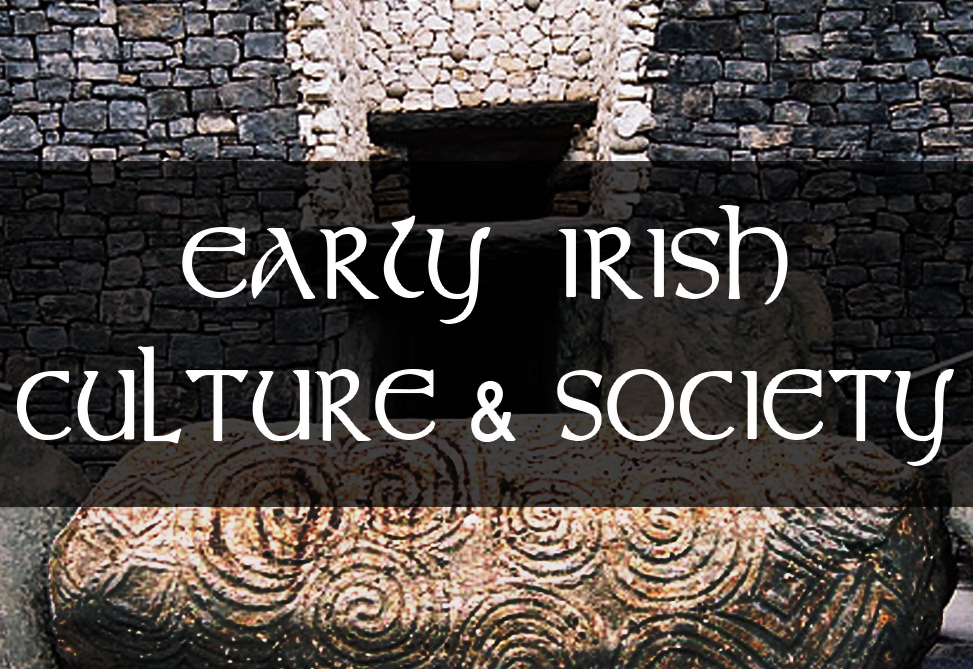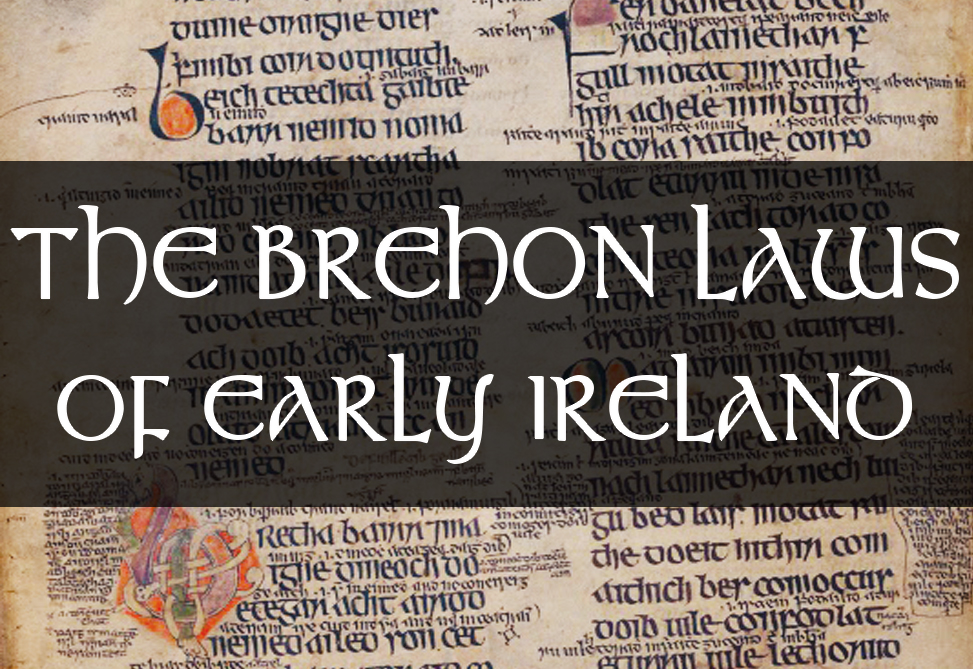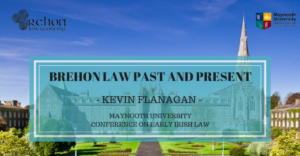Brehon law was not willingly abandoned by the Irish people; it was forcefully replaced by the English crown’s imposition of common law. This process was solidified in the 17th century when the native Irish landholding class, who had been the primary patrons and enforcers of Brehon law, was dispossessed of their lands over generations and definitively during the Cromwellian and Williamite confiscations.
By acknowledging the historical context and the manner in which Brehon law was displaced, we can better appreciate the resilience of the Irish legal tradition and the importance of continued research to enhance our understanding of this remarkable legal system.
The historical context of the loss and fragmentation of information on Brehon law is rooted in Ireland’s tumultuous past, marked by invasions, colonization, and cultural upheaval. The Brehon law, or the native Irish legal system, was well-established and deeply ingrained in Irish society before the arrival of the Anglo-Normans in the 12th century. However, the Anglo-Norman invasion and subsequent English colonization of Ireland resulted in the imposition of English common law and a concerted effort to suppress and marginalize the Brehon law.
The cultural impact of English rule in Ireland was significant, as English settlers and rulers sought to eliminate Irish culture, language, and traditions, including the Brehon legal system. The destruction and loss of historical records, legal manuscripts, and other important documents occurred as a result of wars, rebellions, and the general chaos that accompanied centuries of foreign rule. Furthermore, the decline in the use of the Irish language under English rule led to a decrease in the number of people capable of reading and understanding the original Brehon texts.
As a result of these historical factors, the information available on Brehon law is imperfect and fragmented. However, the surviving texts and documents offer a glimpse into the complexity and sophistication of this legal system. By acknowledging the historical context and the manner in which Brehon law was displaced, we can better appreciate the resilience of the Irish legal tradition and the importance of continued research to enhance our understanding of this remarkable legal system.
8 Core Challenges with the Brehon Law (and How to Address Them)
- Limited historical sources:
Problem: Early Irish law relies on manuscripts, which may not cover all aspects or be completely accurate.
Solution: Although it is true that historical sources on early Irish law may be limited, researchers can still draw valuable insights from the still very large volume of existing manuscripts. Interdisciplinary collaboration with archaeology, linguistics, mythology, and other historical accounts can help piece together a more comprehensive understanding of Brehon law. For all that was lost, so much still remains and this is, perhaps, an underappreciated blessing. - Language barriers:
Problem: Brehon law texts were written in Old Irish, making interpretation and translation challenging.
Solution: While Old Irish presents challenges for modern researchers, there are scholars proficient in the language who can contribute to the understanding of Brehon law. Additionally, continued advancements in language tools and resources can facilitate more accurate translations and interpretations. The power of AI could be harnessed to train a large language model on the extant knowledge of Old Irish. Manuscripts could then be scanned using OCR technology and the language challenge would be pretty close to being resolved. - Cultural context:
Problem: Understanding the intricacies of early Irish society is necessary to interpret the law accurately.
Solution: Although the cultural context of early Irish society may be difficult to fully grasp, mythology, folklore, and other available resources can help illuminate societal norms and values. Comparing Brehon law to other contemporary legal systems may also provide valuable insights into the unique aspects of early Irish society. In other words, it is not unreasonable to infer some characteristics of the Brehon law by taking a wider, holistic view of early Irish culture and society. - Changes over time:
Problem: Irish law evolved over centuries, and distinguishing between different periods is difficult.
Solution: Studying the evolution of Brehon law over time can actually be beneficial, as it offers a unique opportunity to understand the dynamics of legal and social change. Researchers can trace how various influences, such as cultural shifts, political upheavals, and religious transformations, impacted the development of the law. - Influence of Christianity:
Problem: The arrival of Christianity in Ireland influenced the legal system, making it hard to separate original Brehon law from later adaptations.
Solution: While the arrival of Christianity in Ireland did impact the legal system, researchers can still examine pre-Christian Brehon law by focusing on earlier texts and practices. Furthermore, understanding the interaction between Brehon law and Christianity can provide important insights into the process of legal adaptation and syncretism. It must be said, were it not for the coming of Christianity and the love of writing that shortly followed, our knowledge of the Brehon law, the workings of early Irish society, and, yes, even the mythologies might have been lost entirely. The Irish Christian monks were, after all, Irish themselves. - Fragmented political landscape:
Problem: Ireland’s decentralized structure led to variations in law implementation and enforcement.
Solution: The decentralized structure of Ireland may have led to variations in law implementation and enforcement. However, this can also be seen as a strength, as it offers the opportunity to study how different regions adapted and interpreted the law, revealing the flexibility and adaptability of the legal system. This reveals a distinction in two key types of law in effect in early Ireland: urradhus, and cain law. This is the distinction between local custom and universal law (i.e. for crimes of murder, theft, etc.) This key characteristic of Irish law is an example of a pluralistic system that allowed for experimentation and evolution of law from local custom. - Potential biases:
Problem: Early legal scholars may have had biases or personal interests that influenced their accounts of the legal system.
Solution: Recognizing and accounting for potential biases in early legal scholarship is crucial for accurate interpretation. Through careful examination of biases, researchers can challenge assumptions and conduct more nuanced analysis, resulting in a more precise understanding of early Irish law. The biases of 19th and early 20th-century writers, whether of Anglo or Gaelic descent, are evident. Anglo writers often belittled Brehon law as primitive, while Gaelic writers idealized Ireland’s golden age. Awareness of these biases is crucial for conducting a thorough and objective analysis of the Brehon law. - Loss of information:
Problem: Over time, some documents and knowledge about Brehon law may have been lost or destroyed, creating gaps in our understanding.
Solution: Despite the loss or destruction of some information regarding Brehon law over time, researchers can still rely on available sources and interdisciplinary methods to create a comprehensive understanding of the legal system. This reconstruction process also enables the identification of knowledge gaps and stimulates further research, leading to a more profound comprehension of early Irish law.
Finding Answers in Comparative Legal Systems
Comparative analysis of legal systems is not just an academic exercise but an essential tool for understanding how humans organize themselves when there is no central authority.
Through comparative analysis, we can gain a more nuanced understanding of Brehon law and uncover the fundamental principles that govern human societies in these conditions. The study of diverse legal systems highlights their adaptability and resilience amidst changing social, political, and cultural landscapes.
Despite differences in language, culture, geography, and time periods, these legal systems share fundamental principles and values that emphasize community involvement, consensus-building, and restorative justice. These principles and values reflect a deep-seated human need for order, security, and fairness, which are not dependent on centralized control or authoritarian power structures.
In other words, these legal systems demonstrate that humans have a natural tendency to organize themselves in ways that prioritize the well-being of the community and the resolution of conflicts through non-violent means. When centralized control is absent or weak, people turn to other mechanisms for resolving disputes and maintaining social order, often based on local customs and traditions.
Comparative analysis of legal systems helps us to better understand the underlying principles and values that govern human societies, and to appreciate the resilience and adaptability of legal systems in response to changing social, political, and cultural landscapes.
- Somali customary law (Xeer):
- Both Brehon and Somali law emphasizes the importance of compensation payments for offences (e.g., diya in Somali law and éraic in Brehon law).
- Both systems involve a decentralized justice system with a focus on kinship and community relationships.
- Hindu law (Dharmashastra):
- Both Brehon and Hindu law stress the importance of kinship and social hierarchy in dispute resolution.
- Both systems utilize the concept of dharma (duty, righteousness) to guide individuals’ behaviour and maintain social order, similar to the Brehon concept of honour price.
- Native American tribal law:
- Both Brehon law and Native American tribal law prioritize restorative justice, aiming to repair the harm caused by an offence rather than focusing solely on punishment.
- Both legal systems rely on community involvement and consensus in the resolution of disputes.
- Aboriginal customary law in Australia:
- Both Brehon and Aboriginal customary law emphasize the importance of community and kinship relationships in resolving disputes.
- Both systems prioritize compensation and restoration, rather than punishment, in response to offences.
- Early Icelandic law (Grágás):
- Both Brehon and Icelandic law centre on the concept of compensation for offences (e.g., wergeld in Icelandic law).
- Both legal systems are based on feud and damage payments, with secret killings regarded as shameful or more severely punished.






